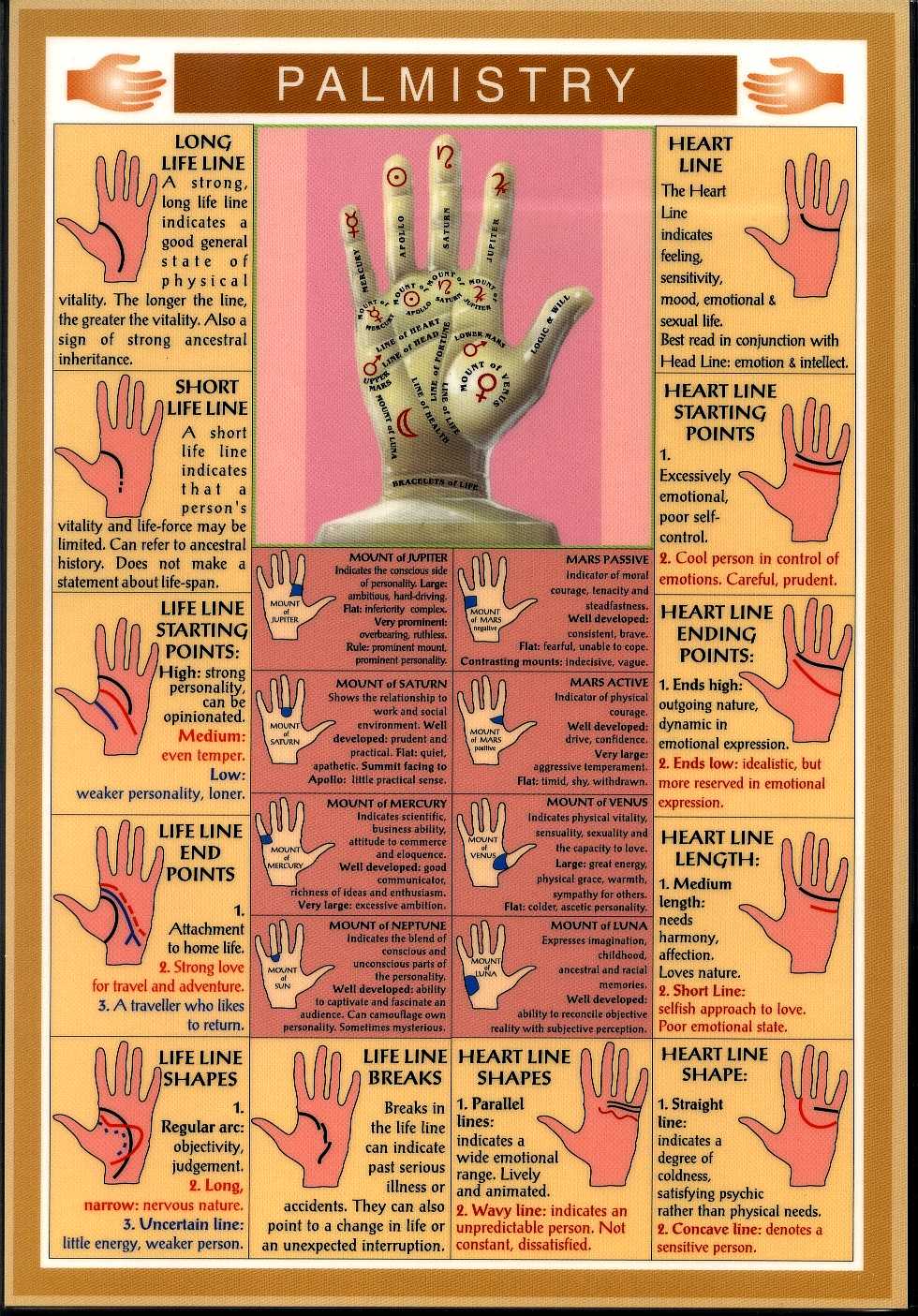Although palmistry is a skill that is developed but for some people they are gifted with an innate talent of seeing through the palm and feeling the pulse of the person. Long time ago in China the practice of determining the pulse is not only what western medicine does of counting the pulse rate but ancient doctors of the East and some would be able to sense your illness just by checking your palm.
Many books have been written and continue to be published about palmistry. But indeed only few are gifted to read the lines of the palm properly and to foretell the past, present and future of the person. But again I believe the future is yet to come and the person whether destiny or fate still has some influence of what she/he would want to happen to his/her life.
So what wikipedia tells about palmistry: (http://en.wikipedia.org/wiki/Palmistry)
Palmistry or chiromancy (also spelled cheiromancy, Greek kheir (χεῖρ, ός), “hand”; manteia(μαντεία, ας), “divination”), is the art of characterization and foretelling the future through the study of the palm, also known as palm reading, or chirology. The practice is found all over the world, with numerous cultural variations. Those who practice chiromancy are generally called palmists, palm readers, hand readers, hand analysts, or chirologists.
Palmistry is a practice originating in the Far East.[1] The practice of palmistry has been used in the cultures of India, Tibet, China, Persia, and some countries in Europe. Studies show that most ancient communities like the Hindus, Sumerians, Tibetans, Hebrews, Babylonians, and Persians were greatly interested in the study and practice of palmistry.
It is believed[2] that Palmistry originated in India with its roots in (Hindu) Astrology (known in Sanskrit as Jyotish), Chinese Yijing (I Ching), and Roma(Gypsy) fortune tellers.[2] The Hindu sage Valmiki is thought [3] to have written a book several thousand years ago, whose title translates in English as "The Teachings of Valmiki Maharshi on Male Palmistry", comprising 567 stanzas.[3][4] Renowned palmist Cheiro learnt palmistry in India where he is believed to have read ancient scriptures on palmistry. From India, the art of palmistry spread to China, Tibet, Egypt, Persia and to other countries inEurope [2][5] From China, palmistry progressed to Greece where Anaxagoras practiced it.[2] Aristotle (384–322 B.C.E.) discovered a treatise on the subject of palmistry on an altar of Hermes, which he then presented to Alexander the Great (356–323 B.C.E.), who took great interest in examining the character of his officers by analyzing the lines on their hands.[6] Aristotle stated that "Lines are not written into the human hand without reason. They emanate from heavenly influences and man's own individuality." Accordingly, Aristotle, Hippocrates and Alexander the Great popularized the laws and practice of palmistry. Hippocrates sought to use palmistry to aid his clinical procedures. Modern palmists often combine traditional predictive techniques with psychology, holistic healing, as well as alternative methods of divination.
- Captain Casimir Stanislas D'Arpentigny published La Chirognomie in 1839.[5]
- Adrien Adolphe Desbarolles published Les Mysteres de la Main in 1859
- Katherine Saint-Hill founded the Chirological Society of Great Britain in 1889
- Edgar de Valcourt-Vermont (Comte de St Germain) founded the American Chirological Society in 1897
- Count Louis Hamon (Cheiro) published Cheiro's Language of the Hand in 1894.[5]
- William Benham published The Laws of Scientific Hand Reading in 1900
- Charlotte Wolff published works from 1936–1969, contributed to scientific chirology
- Noel Jaquin published works from 1925–1958, contributed to scientific chirology
- Arnold Holtzman (Psychodiagnostic Chirology)
- Edward Heron-Allen published various works including in 1883 Palmistry - A Manual of Cheirosophy which is still in print.[5][7]
In Renaissance magic, palmistry (known as "chiromancy") was classified as one of the seven "forbidden arts," along with necromancy, geomancy,aeromancy, pyromancy, hydromancy, and spatulamancy (scapulimancy).[8]

No comments:
Post a Comment